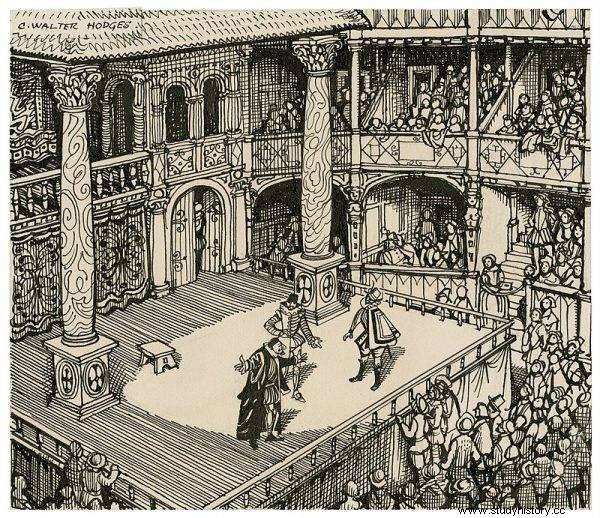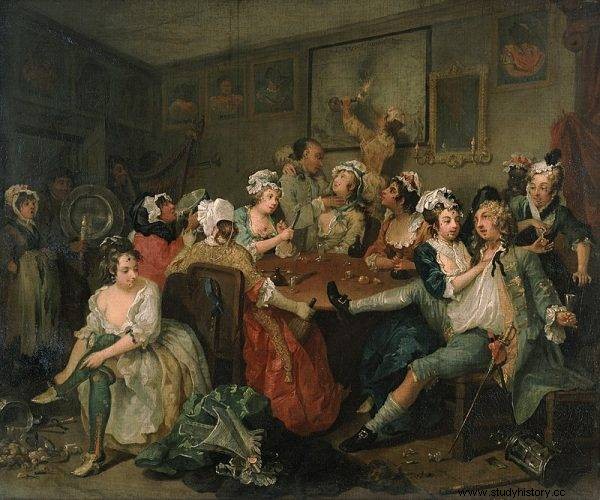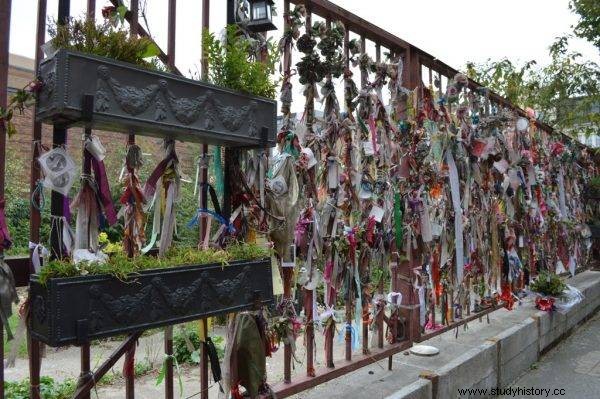More than 15,000 people were buried at the Cross Bones Graveyard, mostly children, the poor and "Winchester geese" - prostitutes whose work the Church earned.
They were called "Winchester suckers," and they brought no small profit to the Church. Nevertheless, they had a separate cemetery - after all, they could not be buried among decent believers. More than 15,000 people are buried at the Cross Bones Graveyard - mostly children, the poor and local prostitutes.
What is allowed under the administration of a bishop?
It started in the 13th century, shortly after the capital of England was moved to London - with the bestowal of Southwark on the bishops of Winchester. The site on the right bank of the Thames has since functioned as liberty, that is an area exempt from royal authority .
These towns and neighborhoods were by no means quiet nooks - closer to the habitats of debauchery than to houses of prayer . You could find taverns, theaters and stages where animal fights took place. There were no laws restricting the rest of the country in Southwark, making the district, despite being governed by the Church, a fun place to stay in London, open to all - regardless of social class or place of birth.

Here, for example, the walls of The Globe Theater were erected
Here, for example, the walls of The Globe Theater stood, and in the 16th century, John Blanke, also known as the reasonable Blackman, ran his business - one of the first Africans to have an independent company in London.
"Winchester Grains"
This place enjoyed one more special privilege. In all of England, only Southwark and two port towns were licensed to operate brothels. Regardless of the hour, it was enough to cross the London Bridge to be surrounded by ladies of easy morals.
The young men wandering there had to take into account the risk of losing money, and worse, gaining some unpleasant ailments. The most serious known at the time - syphilis - was jokingly called "goosebumps" or "pinch of a Winchester geese."
Generating income from prostitution was perfectly legal in Winchester Liberty, and the profession itself was regulated by a number of regulations. Women in the world's oldest profession were not allowed to be beaten or forced to work - the bishops in charge of the district sent their employees for regular checks.
To avoid the risk of falling into slavery, prostitutes were not allowed to live in the workplace. They shouldn't eat in it either. The owners of the taverns did not lend them money. And if they did, in the event of default, they could not pursue their rights in court. When were the ladies allowed to provide services? As a rule, at any time, except during parliamentary sessions, and also on Sundays and public holidays.
Not among decent people
Despite legal, official, taxed work on land for more than 500 years administered by the bishops of Winchester, prostitutes could not be buried in a general cemetery. A funeral in consecrated ground was out of the question for those in professions deemed sinful , suicides, the unbaptized and the poor.
Church authorities therefore designated areas outside the parish where single women - mostly local sex workers - were buried. With time, also the poorest people began to be buried there, until the cemetery was closed in 1853 due to its overcrowding.

Despite legal, official, taxed work on land for more than 500 years managed by the bishops of Winchester, prostitutes could not be buried in the general cemetery.
It is estimated that the land of Cross Bones Graveyard hid more than 15,000 bodies, many of which had traces of syphilis, smallpox and tuberculosis. Most of them were buried in mass graves. Archaeological research conducted in the twentieth century discovered numerous bodies of about one-year-old children, as well as fetuses. It is estimated that adults constitute less than 40% of people buried here.
Body Snatchers
Where was the cemetery located? Redcross Street (now Redcross Way) was not a pleasant place. It actually resembled a slum. What is known about the Cross Bones area is that in the Victorian era it was struggled with overpopulation, high crime and rampant cholera.
The cemetery itself was haunted by the so-called body snatchers. At night, right after the burial, they dug up fresh graves in search of corpses and organs for the anatomical classes at Guy's Hospital nearby.

The steel gate is decorated with numerous ribbons, stockings, flowers and plush toys.
In 1883 the site was sold as a building plot. The campaign led by Lord Brabazon contributed to this, which proclaimed to save the earth from desaccation and to make it an open space for the satisfaction of all people . However, a year later the sale was canceled. For this reason, throughout almost the entire 20th century, the square of the now closed, dilapidated cemetery was used as marketplaces, wood yards and light industry workshops.
Currently, the place serves as a garden and tourist attraction. The steel gate is decorated with numerous ribbons, stockings, flowers and plush toys. There is an inscription on the bronze plaque:
Cross Bones Cemetery. In the Middle Ages, it was a non-consecrated cemetery for prostitutes, also known as "Winchester geese". From the 18th century, this cemetery became a burial place for the poorest (also considered unworthy of a church cemetery for centuries). In 1853 it was closed due to a lack of vacancies. The local community created a commemorative sanctuary here. The dead who have been excluded from society, rest in peace.
Sources:
- Constable J., John H., Crossbones, the strange but true story behind the Garden of Remembrance [in:] crossbones.org.uk [access:15/09/2021].
- Henson D., Finding people in the heritage of Bankside, Southwark, Farnham 2014.
- Peacoch W. G., Bedlam beggars, Winchester geese, and mewling infants:Medicine and women’s health issues in Shakespeare Presidential address , San Francisco 2002.
